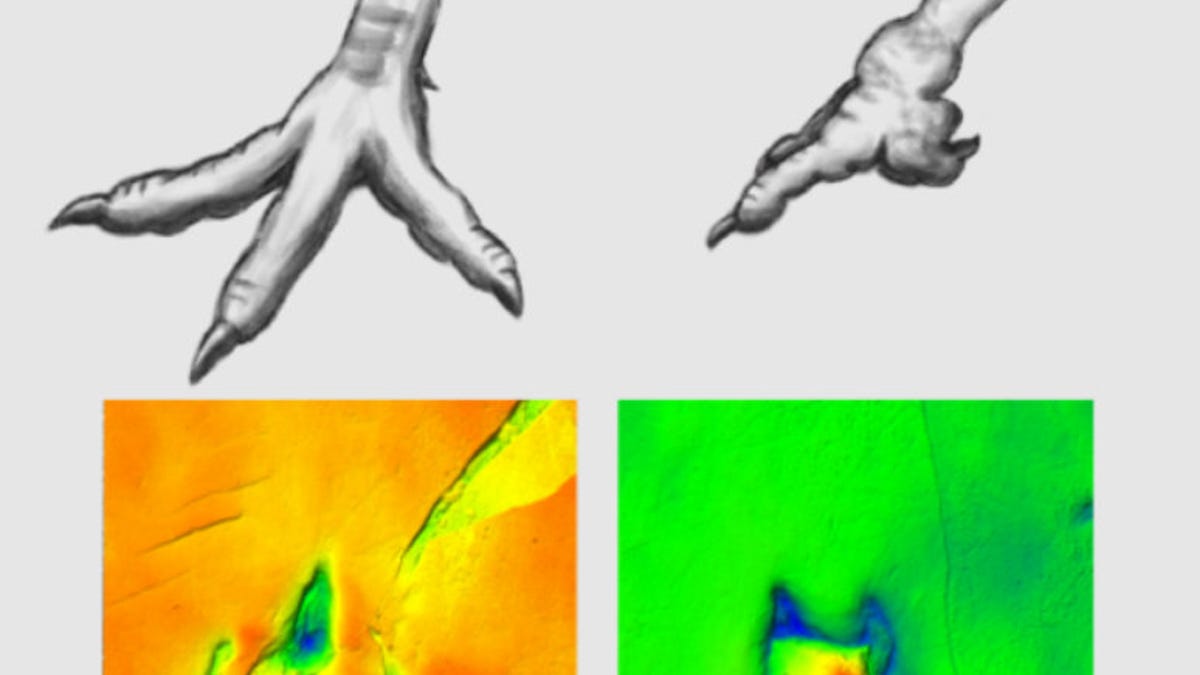Scientists Trace Funky Footprints to Dinosaur Injury 129 Million Years Ago
A dinosaur's distorted tracks tell a tale of tenacity.

The top illustration shows what the dinosaur's two feet may have looked like based on imagery of the fossil footprints.
You're a three-toed dinosaur. You injure your left foot severely enough to deform it. What do you do? You keep on keeping on the best you can, doing your dino thing.
Around 129 million years ago, a theropod dinosaur (a meat-eating, three-toed animal) crossed an area of shallow water, waded through fish, and left impressions of its feet on the ground. Those strange tracks were preserved as fossils and are the focus of a study published in the journal Plos One on Wednesday.
A set of dinosaur tracks in Spain suggests the animal had an injured foot.
Carlos M. Herrera-Castillo of the Autonomous University of Madrid led the research team, which created 3D models of the prints.
"They observed that the tracks made by the right foot display all three toes, but that the innermost toe on the left foot is represented only by extremely short and irregularly shaped markings in the sediment, indicating an injury or deformity in that toe," Plos said in a statement.
The dinosaur also had an unusually wide gait and appeared to be placing more weight onto the right, much like a human favoring a bad foot. "Taken altogether, this evidence sheds light on how this dinosaur, and perhaps many others, found ways to survive despite pathological setbacks," Plos said.
While fossilized dinosaur bones get most of the glory, trackways can tell researchers a lot about what life was like for the extinct animals. The theropod that left the distorted footprints might not be identified, but it tells a compelling story. It was hurt, but was still on its feet, leaving behind a record of its perseverance.

